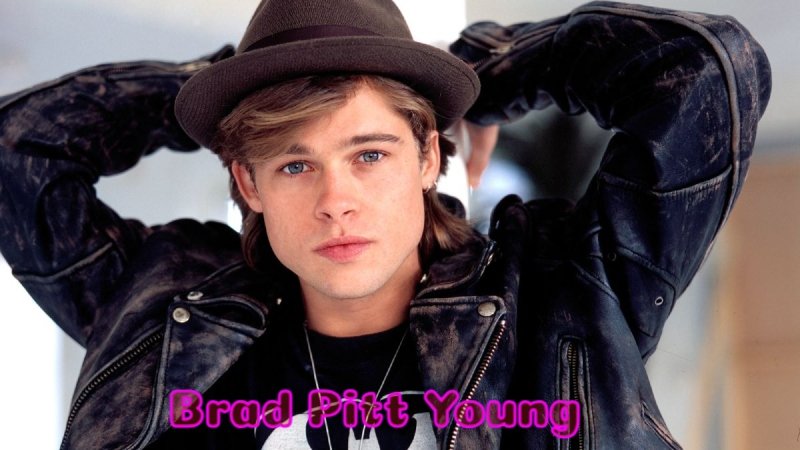Brad Pitt young was more than a handsome face—he was a hungry actor with grit, charm, and timing. His early years show how persistence, training, and a few bold choices turned a kid from Missouri into a ’90s phenomenon. This guide walks through his beginnings, breakout roles, style, and the cultural wave he rode to stardom clearly, simply, and without fluff.
From Missouri to Hollywood
-
Birthplace: Shawnee, Oklahoma; raised in Springfield, Missouri
-
School: University of Missouri, journalism/advertising track
-
Turning point: Just weeks before graduation, he drove to Los Angeles to chase acting
Life in LA started lean. He took odd jobs, parking cars, moving furniture, even wearing a mascot costume, to pay for rent and acting classes. Training with respected coaches and reading for every small part, he built discipline before fame knocked.
The Grind Years: TV Spots and Indie Gigs
In the late 1980s, you could spot young Brad Pitt popping up in commercials and guest roles. Short stints on popular TV shows helped him learn camera craft and timing. Low-budget films followed. Not all were hits, but each job kept him working, learning, and in front of casting directors.
Early screen steps to note:
-
TV guest roles that built visibility
-
Indie features that tested range
-
Commercials that showcased his on-camera ease
Lightning in a Bottle: Thelma & Louise
The game-changer came in 1991. With a few scenes and a cowboy hat, Pitt’s charismatic drifter became the talking point of Thelma & Louise. The performance was brief yet electric—funny, flirty, and unforgettable. It launched him from “working actor” to “next big thing.”
Carving a Lane: Romantic Leads and Period Epics
After that spark, Brad Pitt young leaned into roles that balanced beauty with feeling:
-
A River Runs Through It (1992): Golden-hour Americana and quiet sensitivity
-
Legends of the Fall (1994): Windswept hair, tragedy, and star power in full focus
-
Interview with the Vampire (1994): Brooding presence against gothic grandeur
These films cemented his ’90s heartthrob status while proving he could hold the screen in serious drama.
The Serious Actor Emerges
Critics took sharper notice when he chose darker, riskier material:
-
Se7en (1995): A young detective pushed to the brink—raw and riveting
-
12 Monkeys (1995): Wild, unpredictable energy; awards recognition followed
These choices showed courage. He wasn’t just playing “the lead”; he was chasing complex characters and respected directors.
Style and Presence: Why Young Brad Pitt Still Trends
The ’90s look is part of the myth. Think white tees, leather jackets, loose denim, and effortless hair. But style wasn’t the whole story. His early interviews mixed humility and humor. On red carpets, he looked relaxed, not rehearsed. That mix of polish and ease made him feel both larger-than-life and oddly approachable.
Signature traits:
-
Natural, conversational acting style
-
Playful charisma in short scenes
-
A knack for roles that fit the cultural moment
Training, Fitness, and On-Set Discipline
For roles that required a sharper look, he trained hard, kept routines tight, and respected the craft. Co-stars often noted his preparation and focus. The result: performances that felt lived-in rather than posed. See more: Jimmy Butler Wife
What stood out to colleagues:
-
Memorized beats and clear choices
-
Physical preparation matched to each role
-
Professionalism on set, even when the part demanded chaos
Headlines and Heat: The Tabloid Decade
Fame in the 90s came with constant attention. High-profile relationships and magazine covers fed the buzz, but the work kept the momentum. He chose scripts that stretched him, so the career didn’t rely on gossip or looks alone.
Essential Watchlist: Young Brad Pitt
If you want to see the rise, start here:
-
Thelma & Louise (1991): breakout charisma
-
A River Runs Through It (1992): lyrical, gentle drama
-
Legends of the Fall (1994): sweeping star vehicle
-
Interview with the Vampire (1994): moody, elegant intensity
-
Se7en (1995): tense, modern noir
-
12 Monkeys (1995): wild, award-level turn
-
Fight Club (1999): late-90s cultural thunderbolt
Quick Timeline (Early Years to Icon)
-
1963: Born
-
1980s: College in Missouri; moves to LA; commercials and TV spots
-
1991: Thelma & Louise turn heads
-
1992–1994: Leads in prestige dramas and period films
-
1995: Double impact with Se7en and 12 Monkeys
-
1999: Fight Club seals his place in pop culture
FAQs
How did Brad Pitt get started?
Training, auditions, and small TV roles. He built a résumé brick by brick before stardom arrived.
What was his first big break?
Thelma & Louise (1991). A small part, huge impact.
Why did he stand out in the 90s?
Charisma on screen, smart script choices, and a style audiences copied.
Was he trained or self-taught?
He studied with respected acting coaches in LA while hustling for early jobs.
Which young Brad Pitt film shows his range best?
Pair Legends of the Fall for romance and scope with Se7en or 12 Monkeys for intensity and craft.
Final Thoughts
Brad Pitt young is a story of preparation meeting opportunity. He moved with purpose, learned from each small role, and picked projects that stretched him. The result was a ’90s run that fused star appeal with serious acting—and a blueprint for any newcomer who wants a lasting career, not just a moment.
